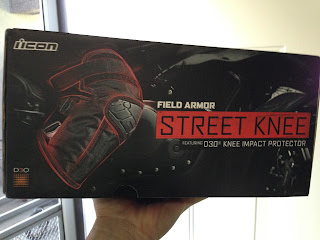Lucky 7, the seventh and final installment of the belly pan saga.
I was determined to finish up the belly pan this week. Looking back through my posts, I found that I have written 6 previous articles on the belly pan. That number seems a little excessive. This project, in both of its iterations, has been a lot of fabrication. To me it has been worth it as I love any excuse to get out in the shop.
The last work to be done was to plug the side and front openings of the lower fairing. These proved to be pretty straight forward though between the side and the front, different finesse was used to do the job.
The last work to be done was to plug the side and front openings of the lower fairing. These proved to be pretty straight forward though between the side and the front, different finesse was used to do the job.
These are what I started with. Two dollar store cake pans. The cake pan I used for the bottom metal came from the cooking section of a regular retail store for something like $8. These, coming from the dollar store, were noticeably thinner and more flimsy. They worked just fine since the side vents were slightly curved as compared to the bottom section. They also cut very easily with just my tin snips.
A little CAD work. Cardboard Aided Design that is. I recycled some cardboard and used it to trace the inside of the side vent openings. From there I added just over 1/2"all the way around to ensure I had good overlap with the plastic. I didn't want any cracking in the plastic due to having the rivet holes too close to the edge of the opening. I marked the pattern "left" since each opening was slightly different from the sanding I did previously. I cut out the cardboard and did some final fitting. Satisfied that I had a good template I marked the metal and cut out two pieces of steel.
I fit and tweaked both pieces of filler into place. I traced out the openings one more time with a sharpie then used the overlap to place my rivet hole marks. I drilled the holes in the metal first, then transferred the marks to the plastic. I taped the metal piece to the inside of the lower fairing to keep it from drifting around when I used the riveter. Two of the rivets didn't break as cleanly as the rest forcing me to need to grind down the jagged stem that remained. A little painters tape kept me from damaging the plastic in case of a grinder slip up.
The front piece was more of the same, but had some extra challenges to overcome. The front mount for the fairing interferes with the top of the filler piece. There is also some bosses and a bolt hole to mount a piece of mesh grill with the stock set up that I had to account for. Tracing, trimming and fitting the cardboard template and metal fill piece were the same as the sides once I worked out the plan.
And here it is finally! I still have to seal the edges and do a little clean up work here and there, but there's no need for a detailed post about that. I want to test the capacity by pouring in known quantities of water until I can't get the belly pan to hold any more. I imagine I can to get between 3 and 4 liters of water. Total coolant and oil capacity of the Ninja is just at 3 liters. Hopefully I will have an extra liter to spare, but I can rest easy knowing that I should make it through the pre-race tech inspection with no hassles.
The prep list is down to one more item. Come back again to see what it is store for the Silver Bullet next!
Blue







Comments
Post a Comment
Thanks for your comments and for following My Motorbike Obsessions!